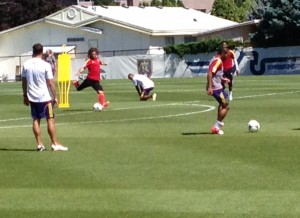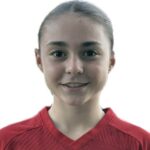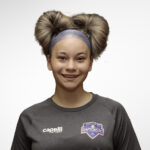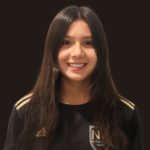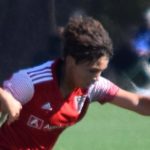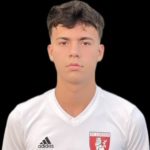Injury prevention made easy: Have your players self-monitor their training readiness
 Do you have days when it all clicks? Your players take every challenge and respond with energy, skill and enthusiasm.
Do you have days when it all clicks? Your players take every challenge and respond with energy, skill and enthusiasm.
Conversely, do you have those other days when it all falls apart? Your players might as well have taken a nap or hit the books early for all the good it is doing.
We’d all like to have more days that click because that’s what will help them toward peak performance, but we are leery of pushing past the peak. Overtraining leads to fatigue and fatigue, poorly managed, likely leads to injury.
+ READ: LeBolt: Top 10 reasons for World Cup injury attrition
It’s a fine line and, let’s face it, these kids are probably only ours for a few hours per week. At best, a few hours per day; we need to make the most of that time. How can we fine-tune our training?
This is on the minds of a lot of coaches judging by the interest and number of sessions on recovery and regeneration at the NSCAA conference. There were fine presentations by fitness professionals and coaches who regularly have access to the best technology. GPS monitors will give you accurate recording of mileage covered, runs made, heart rate levels, acceleration and decelerations. Blood samples will give you first rate measures of lactate accumulation and markers for injury and illness.
But let’s face it: most of us don’t have access to the high-tech training tools. We have a practice field, soccer balls, players, some pinnies, cones and perhaps an agility ladder. We’re not high-tech. But don’t despair: we can do a lot with low tech.
Understand Training Demands
Periodization is the word of the day, though it is not a new word or a new concept in physical training. It traces its roots to Dr. Hans Selye’s description of the body’s response to physical stress and was first adapted for the sport community in the 1950s and 60s by Soviet Olympic athletes. The principles are simple, sound and generalizable, though not simple to achieve:
- Identify performance objectives (i.e. competitions you want to peak for).
- Schedule training in preparation to peak for these events.
- Design a training calendar including conditioning, skill sessions, rest and recovery to peak at tournament time.
Planning this cycle of sessions requires that you know the fitness of your athletes and how physically demanding your workouts are. In general, our youth athletes participate in 2 peak play seasons: Sept-Oct-Nov and Mar-April-May, with tournaments or championship games capping each of those seasons.
Because competitive play is physically demanding, and you want your athletes fresh for play, these in-season months will feature skill work and less demanding conditioning. Preseason is the time for conditioning and fitness, and recovery is the goal during winter and summer break. In-season, build their soccer using the game to make demands.
+ READ: LeBolt: Youth teams getting it right in pregame warm-ups, but still work to be done
Players who continue to train at the same high levels, without rest, throughout the year will not see gains in their fitness over time. Rest is an essential element in recovery for athletes as this is the time when the body rebuilds in response to the demands placed on it during training.
Knowing this, we could err on the side of caution and give extra rest to our players to insure we don’t risk injury. This, I believe, is wise for young players who are still growing. But for our high-school-aged athletes who are seeking to maximize performance, over-resting wastes important training time.
Training time is at a premium, after all, and competitive teams win or lose by small margins. We want them to work hard enough to improve but not so hard that they collapse. How do we know the “just right” level of training? We measure it.
Measure and Monitor Training Load
Heart rate and respiratory rate are the body’s indications of effort. When energy demands are high, the heart and lungs work harder. Even if your team, club or program doesn’t have high-tech heart-rate monitors, you do have players with pulses that can be measured and effort levels that can be assessed. In the days before technology, this was all we had. They still work; updated analysis still confirms the validity of these methods in measuring exertion levels, training demands and monitoring overtraining.
Resting pulse rate, that is, the heart rate measured before you get out of bed in the morning by counting beats for 30-60 secs felt radially (at the wrist) or at the carotid artery in the neck, gives an indication of the stress the body is under even before the day begins. Making note of the resting heart rate each day and watching its pattern helps identify times of stress, where training should be intentionally diminished.
+ READ: LeBolt: We have a broken system when it comes to dealing with head injuries
The body’s stress response does not show favoritism; any stressor (illness, injury, sleep-deprivation, emotional trauma, physical exhaustion) can contribute to an increased resting heart rate. The smart athlete is wise to attend to the body’s signals and reduce training load when stresses are high because the heart-rate training zone available is significantly compressed: peak levels are reached with what are normally very small training loads.
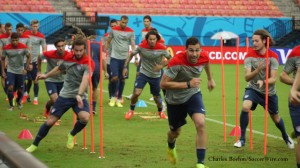 Rate of perceived exertion (RPE) is a number the player him or herself applies to his own subjective perception of exertion level at any point during training. Researchers have confirmed the validity of this as a measure of training load and formulated a simple RPE scale (1-10) with these parameters and their associated training recommendations:
Rate of perceived exertion (RPE) is a number the player him or herself applies to his own subjective perception of exertion level at any point during training. Researchers have confirmed the validity of this as a measure of training load and formulated a simple RPE scale (1-10) with these parameters and their associated training recommendations:
1-3 tired, not well recovered; no training
4-6 moderate energy and moderate recovery; easy or light training load
7-10 increased or high energy; full force training
Athletes should be introduced to the RPE scale for monitoring “how hard does training feel” and can correlate that with pulse rate measurements they take on the pitch. These should be 10 second counts and multiplied x 6 to get beats per minute (bpm). As they become more accurate and consistent at measuring their heart rate they can perform a 6 second count. (multiplied x 10 for bpm)
This system will allow players to confirm the assessment of their own training load and, thereafter, may rely on RPE for self assessment. This is preferred, especially for very fit athletes, who will experience rapid heart-rate recovery during breaks in training and might find it hard to get an accurate pulse count during a stoppage in training.
While one might imagine that players would compare RPE reports or, perhaps, feel pressured into reporting a score higher than they feel, this does not tend to happen. I have found players actually respond well and quite honestly to this approach. If you are concerned about intrasquad comparison, you can have them all shout them at once or hold up fingers signaling ‘their numbers.’
+ READ: LeBolt: For America to win a World Cup, we have to do the one thing we can’t bear
The biggest benefit I have found in using this technique is that it teaches kids to be tuned into their own training and exertion levels. This gives them an accurate monitoring system for training and gives them the responsibility for adapting their training to what they “feel” they can do.
It becomes an automatic gauge to individual training load, automatically taking into account body weight, fitness level, time in the season, injury-recovery status or any other factor that a player’s body takes into consideration before ‘reporting’ how it feels.
This puts effort in the hands of the kids, and leaves training design up to the coach. Thus, players who are self-motivated keep improving according to their own game plan. It’s a sort of an auto-selection of the fittest.
Design Training to Peak their Performance
Remember that high-volume training takes a toll in performance. Technique falls precipitously when players are tired. While neuromuscular coordination falls off early, strength hangs on. Perhaps this is why, as teams fatigue at the end of games, we see brute force applied rather than skill. What if your team retained their skill and coordination because fatigue did not overtake them? That is the goal of soccer fitness; to be fit to the final whistle.
To move toward this goal, unload the volume or demand just enough to get quality skill work done. Identifying this “just right” level will vary with the performance level and age of your players. Be sure, though, that demands are “soccer” demands. That is, while just running your kids may make them faster, it may not make them faster on the field. Be sure that fitness demands mirror sport demands. If you coach a high level team, this will even include positional fitness demands.
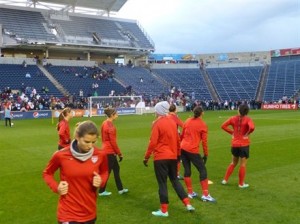 One training model that is helpful to gauge effort level is: green zone –amber zone — red zone.
One training model that is helpful to gauge effort level is: green zone –amber zone — red zone.
- Green zone training is low to moderate build up. Recreational training falls in the green zone as does active recovery training on the day after a heavy effort or competition.
- Amber zone training has two parts: moderate training load (functional performance) and high training load (known as “functional over-reaching”) where training demands simulate competition with the addition of controlled bouts of higher loading to stimulate improvements in performance. Mid-week sessions would be amber if games are on the weekends. A bye week might be a time for a high amber session.
- Red zone training would be chronic over-reaching which, if not redirected, will likely result in underperformance and may end in injury. Interestingly, many high-performing athletes report that they need to push beyond the amber line into the red zone in order to recognize where this line is in order to approach but not cross it in training efforts.
A Coaching Heads-Up
In order to achieve the “just right” or Goldilocks level for training, it is necessary for players and their coaches to be aware of the signs and symptoms of overtraining. Players should report areas of soreness that may signal overdoing it and coaches should keep an eye out for players whose movements are hesitant, disconnected, or unbalanced.
+ READ: Lebolt: Mothers of the Game
This will help the coach design future sessions to address the needs of individual players as part of the team effort and, ultimately, to target weaknesses with “just-right” training. This will prevent injuries in the short term and allow players to train harder and progress more smoothly toward peak performance.
In summary, here are general recommendations for coaches to take to the field:
- Teach your athletes to monitor their heart rates and rate of perceived exertion (RPE). How hard are they working on a 10 point scale?
- Check RPE during warm up. (1 to 3 — don’t train; 4 to 6 — take it easy; 7 to 10 — go full force)
- Keep a training log, recording practice effort, any soreness or injury, and regular resting heart rate values.
- Gradually progress athletes from moderate to high intensity training during building phases. If they’ve been ill or injured, take them back to active recovery phase of training (green zone) and gradually climb back.
- Monitor recovery work outs to be sure players are keeping intensity in the green zone and not pushing to compete with training partners.
- Sleep and good nutrition are essential for performance and probably the best kept secret to a successful training plan.
- Proper periodization including rest and recovery should be part of your game plan for peak performance.
Read more about keeping training balanced here:
Training the Fittest, Be Smart About Functional Over-reaching
—
SOCCERWIRE MARKETPLACE
- visitRaleigh.com Showcase Series 2025, hosted by NCFC Youth
- OFFICIAL MANCHESTER CITY SOCCER CAMPS
- Wanted Licensed Youth Soccer Coach
- Join Official Elite Summer Soccer Camps with Europe’s Top Pro Clubs!
- The St. James FC Travel Staff Coach - North (Loudoun) & South (Fairfax)
- The St. James FC Girls Academy (GA) Head Coach - 2 teams
- The St James FC Boys Travel Tryouts
- OFFICIAL BAYERN MUNICH SUMMER CAMPS U.S.
- JOIN THE ALLIANCE!
- OFFICIAL FC BARCELONA CAMPS U.S.


